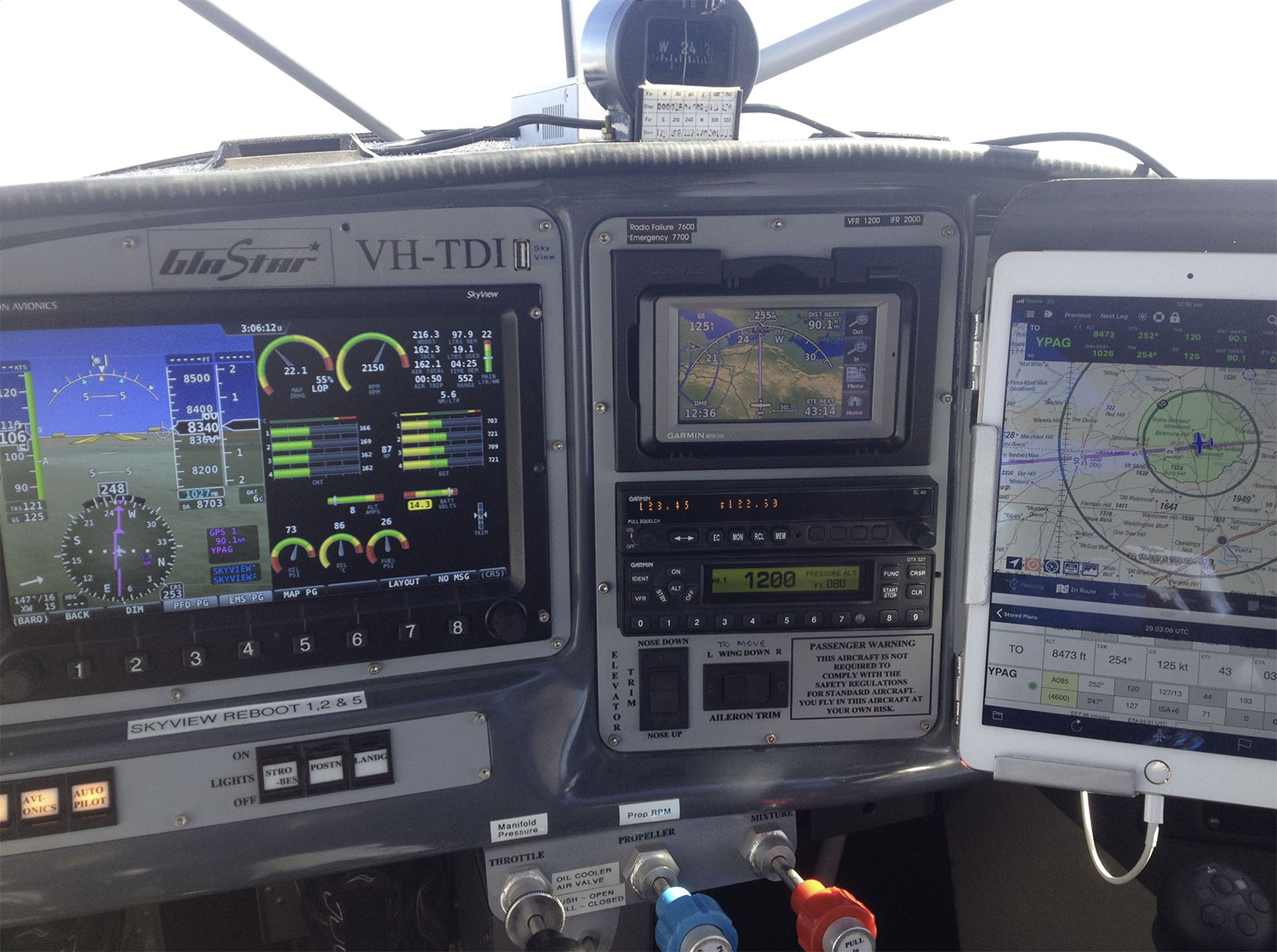Sue and I have twice taken the GlaStar on flying safaris across Australia. In those trips we flew as tag-alongs with Stawell Aviation. This time we were a tag-along to a three ship fleet operated by the owner and pilots of WardAir, a flying school based in Bathurst, New South Wales. The school was taking advantage of the Australian Women Pilots’ Association’s annual conference in Perth to train their students in cross-country pilotage.
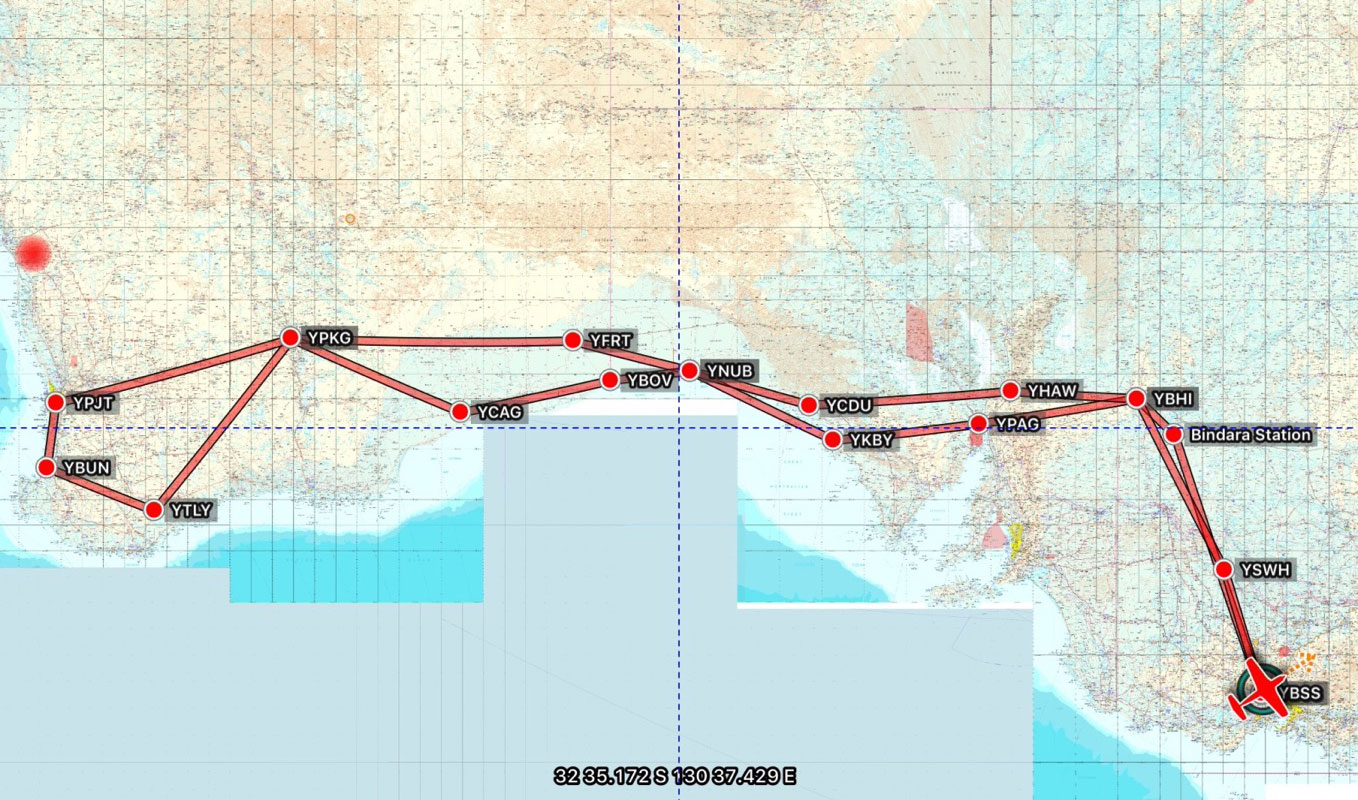
In return for payment of what I regarded as a wholly reasonable sum I got the advantage of involvement in morning and evening flight briefings, transport from each aerodrome to prearranged accommodation and the support and fellowship of a diverse group of pilots of varying skill levels.
Aircraft accompanying us were a Piper PA-39 Comanche twin, a Piper Arrow III PA-28R-201, and a Cessna 172S.
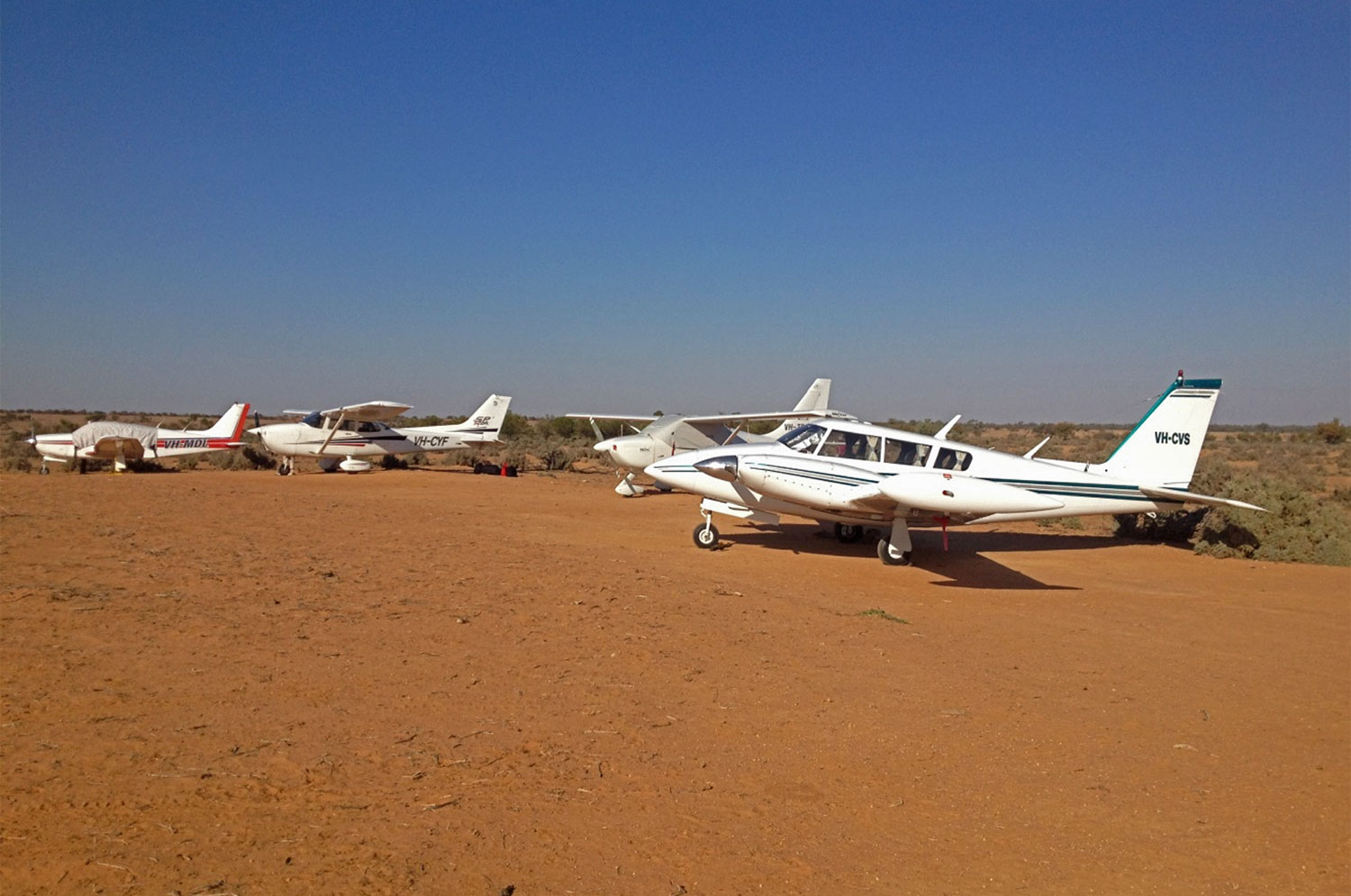
I had one issue, twice, with the GlaStar—the engine air inlet Aeroduct hose worked its way off the air filter housing allowing unfiltered air to the engine. I carry what I hope is a full kit of tools so refitting it was a fairly quick job and after the second time I had no further issues. I have my thoughts as to why it came off and after talking with others have an improvement in mind.

My usual flight setting of 55% Power LOP meant that the GlaStar couldn’t outrun the Comanche or the Arrow but held its own with the Cessna. The GlaStar at 22 litres per hour (4.8 gallons per hour) in cruise is very frugal at this power setting averaging 21.9 litres per engine-on hour for the trip. We had varying winds, more commonly head than tail. The highest ground speed I recall seeing was around 170 knots, the lowest 77 knots (and rough!). The engine used 1 quart of oil per 23 engine hours.
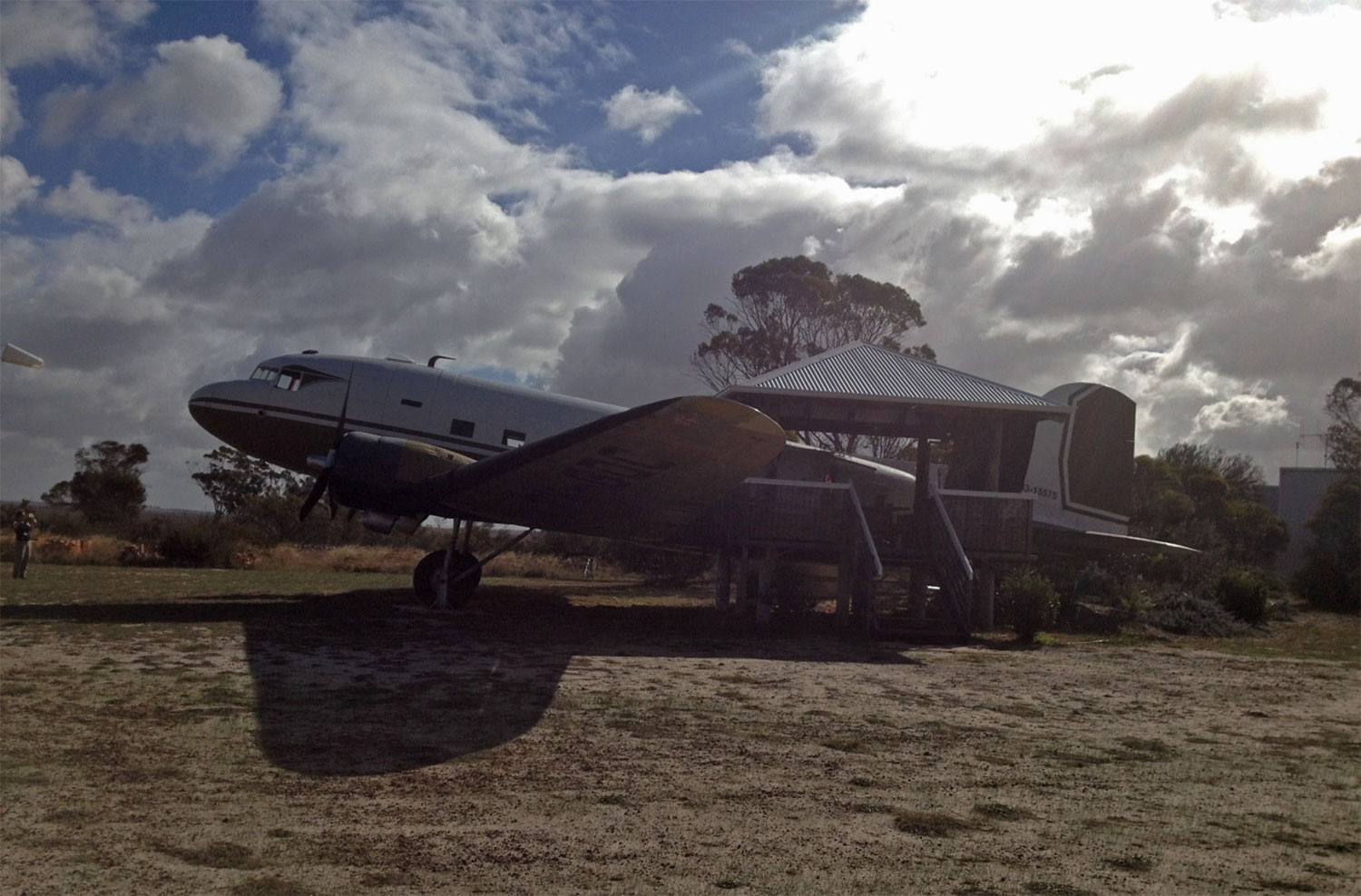
Highlights of the trip included: the overnight stays at Bindara Station on the Darling River and in the converted DC3 at The Dutch Lily; the slow, low and turbulent flight to Bunbury and subsequent landing into a 29-knot headwind; the departure northbound out of Jandakot around Perth in, for me, poor conditions (showers, low cloud and strong winds); the dust storm on track to Wave Rock. We had planned to land at Wave Rock but couldn’t see it or much else on the ground unless looking straight down so skipped this stop and climbed to 10,000 feet above scattered clouds. Short of Kalgoorlie we outran the dust storm and landed in CAVOK conditions. We stayed at Forest in a railway workers’ house built in the late 40s. The hospitality of the caretakers was appreciated. We gathered around a roaring campfire whilst the sun dropped (and the flies went to sleep) then had an excellent meal on the covered veranda of the caretaker’s residence.

On the return flight we tracked via Hawker just south of Wilpena Pound. I overflew the town on descent for the single strip not far east. I couldn’t see the airfield. The GPS said I was over it so I looked out the side window and found the bitumen strip immediately below! Here I added the 20 litres of Avgas, which I carried in a bladder on this leg, to the left tank. This was a precaution which I found on later landing in Broken Hill I need not have taken but the arrival into Bunbury earlier in the trip with 45 minutes in the tanks was still on my mind. After having our pre-purchased snacks in the well maintained terminal building (fortunately fly proof), I put the $10 landing fee into the honesty box and launched for a fly-around of the Pound – a spectacular sight. The airwaves were busy for the next 15 minutes of so with intention and position reports from at least 7 aircraft including at least one helicopter.
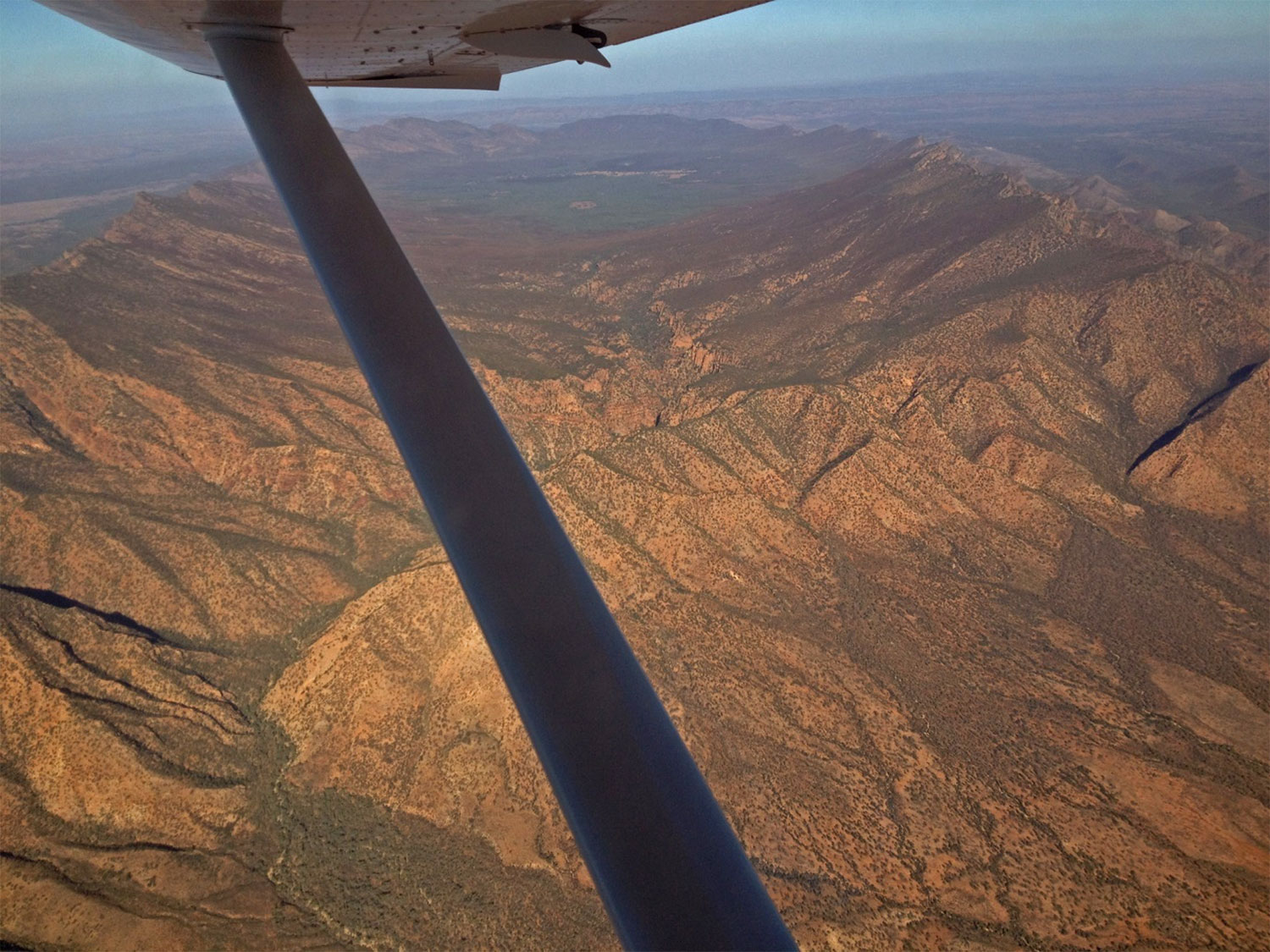
Countryside traversed during the trip varied from coastal as we navigated our way around the Great Australia Bight with its spectacular 300-foot high cliffs to the absolute flatness of the Nullabor Plains, sandhills as far as the eye could see, and the rugged Flinders Ranges. A truly outback trip.
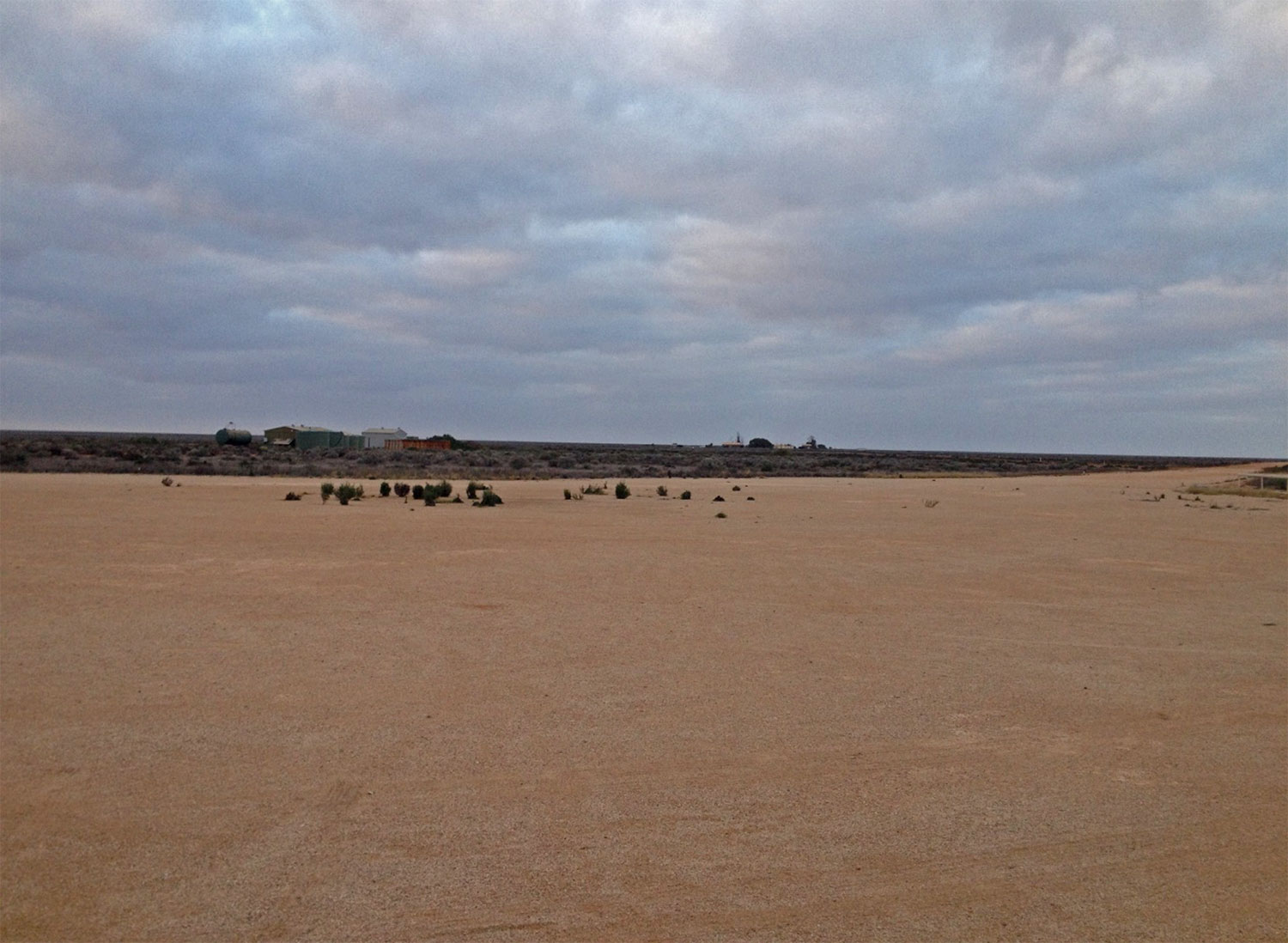
On the last day after a night at Broken Hill we said goodbye to our fellow travelers and tracked for Bacchus Marsh overflying Mungo Lodge (where we are planning to go on our next private safari) then a landing at Swan Hill for a facilities break and a snack. An hour and a half later we were putting the GlaStar away in the hangar.
Sue and I agreed that this was a most enjoyable safari across Australia. The professionalism of the flight instructors was a pleasure to observe as was the enthusiasm shown by their students.
We can see a trip up the east coast to Cape York and another to Darwin in our future!
